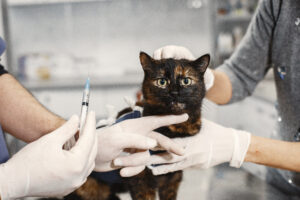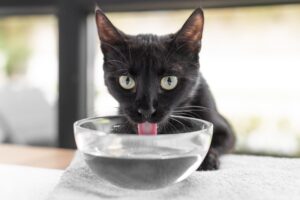Introduction
Siamese mix cat breeds have become increasingly popular in recent years, combining the striking features of purebred Siamese cats with various traits from other feline breeds. While these stunning mixed-breed cats offer unique personalities and appearances, they aren’t necessarily the perfect fit for every household. Whether you’re considering a Siamese mixed with tabby, a striking Siamese Bengal mix, or the fluffy Siamese Maine Coon mix, it’s important to understand both the rewards and challenges of bringing these distinctive felines into your home.
As a prospective cat owner, you might be drawn to Siamese mix cats for their beautiful coloration, vocal nature, and intelligent personalities. However, before adopting a Siamese mix cat, it’s crucial to assess whether their specific characteristics align with your lifestyle, living situation, and expectations. Many potential owners are caught off guard by certain aspects of these captivating crossbreeds.
In this comprehensive guide, we’ll explore four compelling reasons why Siamese mix cat breeds might not be the right choice for you, while also discussing popular Siamese mix varieties such as the Siamese Persian mix, Siamese Ragdoll mix, and the distinctive Flame Point Siamese mix. By understanding these factors, you can make an informed decision about whether a Siamese mix kitten will thrive in your care or if another breed might better suit your circumstances.

Understanding Siamese Mix Cat Breeds
Before diving into potential drawbacks, let’s establish what we mean by Siamese mix cat breeds. A Siamese mix refers to any cat with Siamese ancestry combined with one or more additional breeds. These crosses can occur intentionally through breeding programs or naturally through random mating. The result is a diverse range of cats that carry some Siamese characteristics while displaying traits from their other lineage.
Siamese cats themselves are one of the oldest recognized cat breeds, originating from Thailand (formerly known as Siam). Traditional Siamese cats feature a distinctive color point pattern, with darker coloration on their extremities (face, ears, paws, and tail) contrasting against a lighter body. Their striking blue almond-shaped eyes, sleek bodies, and vocal personalities have made them sought-after companions for centuries.
When Siamese cats are mixed with other breeds, the resulting Siamese mix kittens may inherit various combinations of physical and behavioral traits. Some common Siamese mix cat breeds include:
- Siamese Tabby Mix (also called Tabby Point Siamese): Combines the color points of Siamese with tabby stripes
- Siamese Ragdoll Mix: Blends the color points and blue eyes of Siamese with the larger size and gentle temperament of Ragdolls
- Siamese Maine Coon Mix: Merges Siamese features with the large frame and tufted ears of Maine Coons
- Siamese Bengal Mix: Combines Siamese traits with the wild appearance and high energy of Bengal cats
- Siamese Persian Mix: Blends Siamese characteristics with the long coat and flat face of Persian cats
- Siamese Calico Mix: Features the distinctive calico pattern alongside Siamese traits
- Blue Point Siamese Mix: Showcases the blue-gray points of the Siamese coloration with mixed breed features
- Lynx Point Siamese Mix: Displays tabby markings on the color points
- Flame Point Siamese Mix: Exhibits orange or red points instead of the traditional darker markings
- Snowshoe Siamese Mix: Often features white “boots” on the paws along with Siamese coloration
What does a Siamese mix look like? The appearance can vary dramatically depending on the other breed(s) in the mix. However, many Siamese mix cats retain some degree of the pointed coloration pattern, although it may be modified by the genetics of the other breed. The distinctive blue eyes of purebred Siamese may also be present in many mixed offspring.
Now that we’ve established what Siamese mix cats are, let’s explore why they might not be the ideal choice for every potential cat owner.
Reason 1: The Vocal and Demanding Nature of Siamese Mix Cats
One of the most distinctive aspects of the Siamese mix personality is their vocal nature, which they often inherit from their Siamese parentage. If you’re seeking a quiet, unobtrusive pet, Siamese mix cat breeds might present a significant challenge for you.
Loud and Frequent Vocalizations
Purebred Siamese cats are known for their loud, distinctive “meezer” vocalizations, and many Siamese mix cats inherit this talkative tendency. These cats don’t just meow occasionally – they engage in full conversations with their humans throughout the day. Whether it’s a Siamese Bengal mix expressing its desires or a Siamese Ragdoll mix requesting attention, these cats are not shy about making their presence known.
The vocalizations of Siamese mix cats can vary in tone and volume, but they’re consistently more frequent and expressive than many other cat breeds. This trait can be particularly challenging if:
- You live in an apartment with thin walls and noise-sensitive neighbors
- You work from home and need a quiet environment for calls or concentration
- You prefer a more independent, less interactive pet
- You have household members who are light sleepers or are disturbed by noise
Lisa Johnson, a Siamese mix cat owner from Portland, shares: “My Siamese tabby mix, Luna, has conversations with me from the moment I wake up until bedtime. While I find it endearing, my roommate who works night shifts struggles with Luna’s midday serenades.”

Demanding Attention and Interaction
Beyond their vocal nature, Siamese mix cats are often highly social and demand significant attention from their human families. The Siamese mix personality typically includes traits like:
- Strong attachment to their humans
- Distress when left alone for extended periods
- Insistence on participation in household activities
- Need for regular interactive play sessions
- Tendency to follow owners from room to room
Dr. Michael Wong, a veterinarian specializing in feline behavior at Pet Health Center, explains: “Siamese cats and many of their mixes have been selectively bred for companionship over centuries. This has resulted in cats that form incredibly strong bonds with humans and experience genuine distress when that social need isn’t met.”
If your lifestyle involves frequent travel, long work hours away from home, or limited energy for interactive play, the typical Siamese mix cat characteristics of neediness and vocalization could lead to stress for both you and your pet. These cats thrive on companionship and often do poorly when left to entertain themselves for extended periods.
Reason 2: Potential Health Concerns in Siamese Mix Cat Breeds
While mixing breeds can sometimes result in hybrid vigor, Siamese mix cats may still inherit health predispositions from their Siamese lineage. Understanding these potential health concerns is crucial when deciding if adopting a Siamese mix cat is right for your situation.
Inherited Health Conditions
Purebred Siamese cats are predisposed to certain genetic health issues, and these can sometimes appear in Siamese mix kittens as well. Depending on what breed your Siamese is mixed with, the risk profile may change, but potential health concerns include:
- Progressive Retinal Atrophy (PRA): This degenerative eye condition can lead to vision loss and is found in many Siamese cats. Siamese mix breeds, particularly Siamese Bengal mix cats, may inherit this predisposition.
- Amyloidosis: A condition where protein deposits damage organs, particularly affecting the liver in Siamese cats. This may appear in mixes like the Siamese Persian mix.
- Respiratory Issues: Siamese cats often have a slightly different skull shape than other breeds, which can sometimes lead to respiratory challenges. This may be especially pronounced in Siamese mix cats with flat-faced breeds like Persians.
- Dental Problems: Many Siamese cats experience dental issues, and these can be passed to Siamese mix cat breeds, requiring vigilant dental care.
- Heart Conditions: Hypertrophic cardiomyopathy and other cardiac conditions have been documented in the Siamese breed and may appear in mixed offspring.
Dr. Rebecca Martinez from the American Association of Feline Practitioners notes, “While mixed breed cats generally experience fewer health issues than purebreds, specific genetic conditions can still be passed down. When considering a Siamese mix, particularly those from Siamese cats mixed with breeds that share similar health concerns, proactive veterinary care becomes essential.”
Special Care Requirements
Depending on the specific Siamese mix you’re considering, certain types of Siamese mix cats may require specialized care due to their physical characteristics:
- Longhaired Siamese Mixes (like Siamese Ragdoll mix or Siamese Maine Coon mix cats): These require regular grooming to prevent matting and hairballs.
- Flat-Faced Siamese Mixes (such as Siamese Persian mix): May need special attention to eye cleaning and monitoring for breathing difficulties.
- High-Energy Siamese Mixes (like Siamese Bengal mix): Require extensive environmental enrichment and play to prevent destructive behaviors.
Additionally, the distinctive color points seen in many Siamese mix cats are actually a form of partial albinism, which can make these cats more sensitive to temperature extremes. This means Siamese mix cat breeds might need additional environmental considerations compared to other cats.
If you’re not prepared for potentially higher veterinary costs or specialized care routines, the health predispositions of Siamese mix cats could present a challenge. When adopting a Siamese mix cat, expect to budget for:
- Regular veterinary check-ups (potentially more frequent than for other cat breeds)
- Possible specialty care for inherited conditions
- Grooming tools or professional grooming services (for long-haired mixes)
- Environmental modifications to accommodate temperature sensitivity
Understanding these potential health concerns doesn’t mean every Siamese mix will develop problems, but being prepared for these possibilities is an important part of responsible pet ownership.
Reason 3: High Intelligence and Need for Stimulation

Siamese mix cats are renowned for their remarkable intelligence, which they often inherit from their Siamese parentage. While an intelligent cat may sound appealing, this characteristic can present significant challenges for unprepared owners.
Problem-Solving Abilities That Lead to Mischief
The high intelligence of Siamese mix cat breeds means they quickly learn how household items work—including door handles, cabinets, and even simple latches. This problem-solving ability can lead to situations where:
- Food containers are mysteriously opened
- “Cat-proof” areas become accessible
- Items you thought were safely stored away become new toys
- Behavioral training becomes a battle of wits
Melissa Chen, who has lived with her Flame Point Siamese mix for five years, shares: “Winston figured out how to open the refrigerator door within his first month with us. We’ve had to childproof our entire house far more extensively than we did for our actual human children.”
This intelligence, while impressive, requires owners to stay one step ahead and continuously provide new challenges and secure their homes in ways that other cat breeds might not necessitate.
Mental Stimulation Requirements
Beyond their capacity for mischief, Siamese mix cat characteristics include a genuine need for mental engagement. Without adequate stimulation, these intelligent cats can develop problematic behaviors including:
- Excessive vocalization (even beyond their naturally talkative tendencies)
- Destructive behaviors like scratching furniture or chewing items
- Depression or anxiety symptoms
- Overgrooming or other stress-related behaviors
- Aggression toward other pets or humans
Dr. Sarah Williams, an animal behaviorist specializing in felines, explains: “Many behavioral issues we see in Siamese mix cats trace back to mental understimulation. These cats need daily engagement that challenges their problem-solving abilities, not just physical exercise.”
This means that owning a Siamese mix cat—whether it’s a Siamese mixed with tabby, a Blue Point Siamese mix, or any other variety—requires a significant time commitment to provide:
- Interactive puzzle toys that challenge their intelligence
- Regular training sessions (yes, cats can be trained!)
- Rotating toy selections to prevent boredom
- Environmental enrichment like climbing structures and exploration opportunities
- Daily interactive play sessions that engage their hunting instincts
For busy households or those seeking a more independent pet, the intellectual needs of Siamese mix cats can prove exhausting. Unlike some cat breeds that are content with occasional attention and self-directed play, most types of Siamese mix cats thrive only when their mental needs are consistently met.
Reason 4: Siamese Mix Temperament Challenges with Children and Other Pets
The distinctive Siamese mix personality can create compatibility challenges in multi-pet households or homes with young children. While individual temperaments vary widely among Siamese mix cat breeds, certain tendencies merit careful consideration.
Interaction with Children
Siamese mix cats often form strong bonds with their human family members, but their temperament can sometimes clash with the unpredictable nature of young children:
- Sensitivity to Noise and Handling: Many Siamese mix cats, particularly those closer to purebred Siamese in temperament, can be sensitive to loud noises and rough handling—both common with young children.
- Territorial Behavior: Some Siamese mix cats establish strong territorial boundaries and may become stressed when children don’t respect their space or safe zones.
- Overstimulation: The high intelligence and sensitivity of Siamese mix kittens and adults mean they can become overstimulated more quickly than some other breeds, potentially resulting in scratching or nipping behaviors.
Child development specialist and cat behavior consultant Jennifer Martinez notes, “The ideal home for most Siamese mix cats includes either older children who understand cat body language or adults who can mediate interactions between younger children and these sensitive cats.”
This doesn’t mean Siamese mix cats can’t live happily with children—many do—but it requires a household commitment to teaching appropriate interaction and respecting the cat’s boundaries.
Compatibility with Other Pets
The social nature of Siamese mix cat breeds can manifest in complex ways when other pets are involved:
- Strong Hierarchical Needs: Many Siamese mix cats, from the Snowshoe Siamese mix to the Lynx Point Siamese mix, have a strong need to establish their position in the household hierarchy. This can create tension with other assertive pets.
- Attention Competition: Because Siamese mix cats often demand significant human attention, they may become jealous or stressed in homes where multiple pets compete for interaction time.
- Breed-Specific Interactions: Certain Siamese mixes may have additional compatibility considerations based on their other breed influences:
- Siamese Bengal mix cats often retain high prey drives that can make them challenging around small pets
- Siamese Ragdoll mix cats typically show better adaptability to multi-pet households
- Siamese Maine Coon mix cats often get along well with dogs but may assert dominance over other cats
Thomas Garcia, who runs a cat rescue specializing in Siamese and their mixes, explains: “We carefully assess household dynamics before placing our Siamese mix cats. They can be wonderful companions in multi-pet homes, but the introduction process is crucial and sometimes needs to be more gradual than with more easy-going breeds.”
When considering adopting a Siamese mix cat into a home with existing pets, it’s important to plan for:
- Slow, methodical introductions (potentially taking weeks rather than days)
- Separate resources (feeding stations, litter boxes, resting areas) to minimize competition
- Continued monitoring of interactions even after the initial introduction period
- Possible behavioral adjustment periods that may require professional guidance
For households seeking harmony with minimal effort, the sometimes complex social needs of Siamese mix cat breeds could present an ongoing challenge.
Finding the Right Fit: When Siamese Mix Cats ARE Right for You

Despite the challenges outlined above, Siamese mix cats make wonderful companions for the right owners. Understanding the Siamese mix personality and preparing appropriately can lead to a rewarding relationship.
Ideal Owners for Siamese Mix Cat Breeds
Siamese mix cat breeds tend to thrive with owners who:
- Work from home or spend significant time at home: The social nature of Siamese mix cats means they do best with present companions.
- Enjoy interactive relationships with pets: If you’re looking for a cat that engages with you rather than simply coexisting in your space, a Siamese mix might be perfect.
- Have previous cat experience: The complex needs of Siamese mix cats are often better managed by those who already understand feline behavior.
- Live in homes with secure outdoor spaces or are committed to providing indoor enrichment: The active nature of many Siamese mix kittens continues into adulthood, requiring appropriate outlets.
- Are prepared for a 15-20 year commitment: With proper care, many Siamese mix cats enjoy long lifespans.
Matching Specific Siamese Mixes to Your Lifestyle
Different types of Siamese mix cats may align better with different living situations:
- Siamese Ragdoll Mix: Often more laid-back than other Siamese mixes, potentially better for quieter households
- Siamese Bengal Mix: Highly active and playful, ideal for energetic households with space for climbing and running
- Siamese Persian Mix: May be less active but require more grooming commitment
- Blue Point Siamese Mix or Flame Point Siamese Mix: Often retain strong Siamese personalities but with striking colorations
- Siamese Calico Mix: Combine unique coloration with Siamese traits, often creating cats with striking appearances
Dr. Jennifer Wilson from Cat Behavior Associates advises: “When looking at Siamese mix kittens, observe which parent the kitten seems to take after more strongly. This can give you insights into which breed’s temperament might be dominant as the cat matures.”
Adopting vs. Purchasing Siamese Mix Cats
Many wonderful Siamese mix cats are available through rescue organizations and shelters. Adopting a Siamese mix cat offers several advantages:
- Adult cats’ personalities are already established, making temperament assessment more reliable
- Rescue organizations often provide comprehensive health screenings
- Adoption fees are typically lower than breeder prices for designer Siamese mixes
- Many Siamese mix cats in shelters have already lived in homes and may have basic training
When considering the best Siamese mix cat breeds for your situation, adoption counselors can provide valuable guidance based on your specific lifestyle and the known history of available cats.
Conclusion: Making an Informed Decision About Siamese Mix Cat Breeds
Siamese mix cat breeds offer distinctive personalities, striking appearances, and devoted companionship to the right owners. However, their vocal nature, potential health considerations, high intelligence requirements, and complex social needs make them challenging pets for unprepared households.
Before bringing home a Siamese mix kitten or adult cat, honestly assess:
- Your tolerance for vocal pets
- The time you can commit to interaction and mental stimulation
- Your household composition (other pets, children)
- Your willingness to address potential breed-specific health issues
- Your ability to provide appropriate environmental enrichment
For those who can meet these needs, Siamese mix cats—whether they’re a Siamese mixed with tabby, a Lynx Point Siamese mix, or any other variety—can become extraordinary companions. Their intelligence allows for deep bonds, their social nature creates genuine relationships, and their distinctive appearance ensures you’ll have a unique and beautiful pet.
If you’re still uncertain whether a Siamese mix is right for your home, consider:
- Volunteering at shelters that house Siamese mix cats to gain firsthand experience
- Speaking with breed-specific rescue organizations about foster-to-adopt programs
- Consulting with veterinarians familiar with the specific Siamese mix cat characteristics you’re considering
By thoroughly understanding both the challenges and rewards of Siamese mix cat breeds, you can make an informed decision that benefits both you and your potential feline companion. Remember that responsible pet ownership begins with matching the right cat to the right home—whether that’s a Siamese mix or another breed entirely.
FAQs About Siamese Mix Cat Breeds
What does a Siamese mix look like?
Siamese mix cats can vary dramatically in appearance depending on the other breed(s) in their ancestry. Many retain some version of the pointed coloration pattern characteristic of Siamese cats, where the face, ears, paws, and tail are darker than the body. They may also inherit the striking blue eyes common in purebred Siamese. However, depending on the mix, they might have different body types, coat lengths, and color variations beyond traditional Siamese points.
What are the best Siamese mix cat breeds for families?
The Siamese Ragdoll mix and Snowshoe Siamese mix often make excellent family cats due to their typically patient temperaments. The Siamese Maine Coon mix can also adapt well to family life, particularly in homes with older children who understand how to respectfully interact with cats.
Are Siamese mix cats more or less healthy than purebred Siamese?
Generally, Siamese mix cats benefit from hybrid vigor and may experience fewer health problems than purebred Siamese cats. However, they can still inherit genetic predispositions from both parent breeds, so health outcomes vary by individual. Mixed breeding often reduces the severity or frequency of breed-specific conditions but doesn’t eliminate them entirely.
How does the Siamese mix personality differ from purebred Siamese?
While Siamese mix cats often retain the intelligence, social nature, and vocal tendencies of purebred Siamese, these traits may be moderated by the influence of the other breed(s) in the mix. For example, a Siamese Persian mix might be somewhat less active and talkative than a purebred Siamese but more social than a typical Persian.
What’s the difference between adopting a Siamese mix vs. purebred?
Adopting a Siamese mix cat generally offers more variety in appearance and potentially temperament, often at a lower cost than purchasing a purebred. Siamese mix cats in shelters or rescues also frequently have known histories and established personalities, making it easier to find a cat whose temperament matches your household needs.
How can I tell if my cat is a Siamese mix?
Common indicators of Siamese heritage include pointed coloration (darker extremities), blue eyes, a vocal personality, and a slender, athletic build. However, definitive identification of a Siamese mix cat’s ancestry may require genetic testing, particularly if the cat shows subtle Siamese influences or is several generations removed from purebred ancestry.
This article about Siamese mix cat breeds is provided for informational purposes only and does not substitute for professional veterinary advice. If you’re considering adopting a Siamese mix cat, consult with veterinarians and cat behavior specialists familiar with these specific breeds to determine the best fit for your household.
Learn more about cat adoption Discover common cat health issues Explore our guide to cat breeds
Cornell University College of Veterinary Medicine






